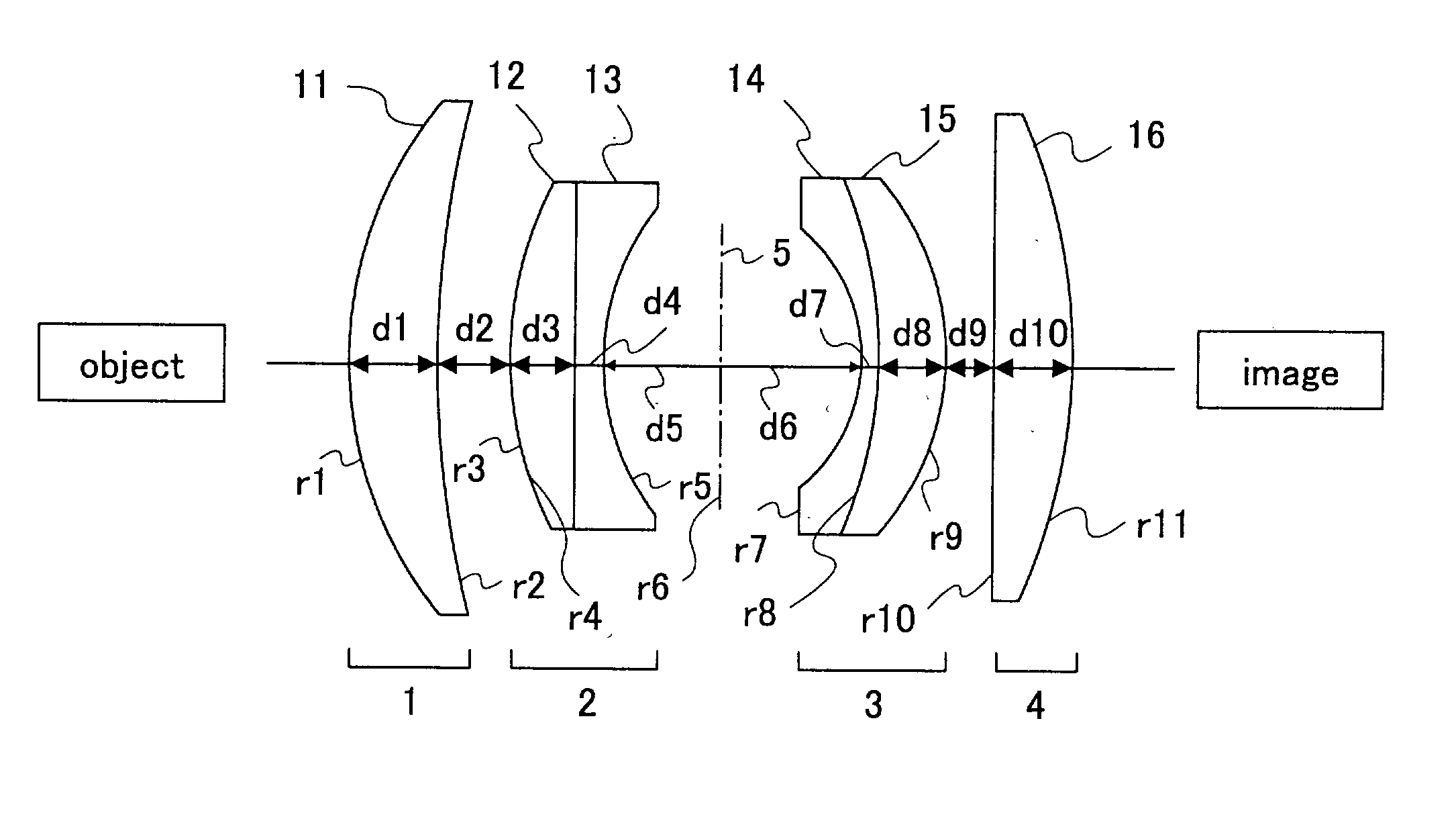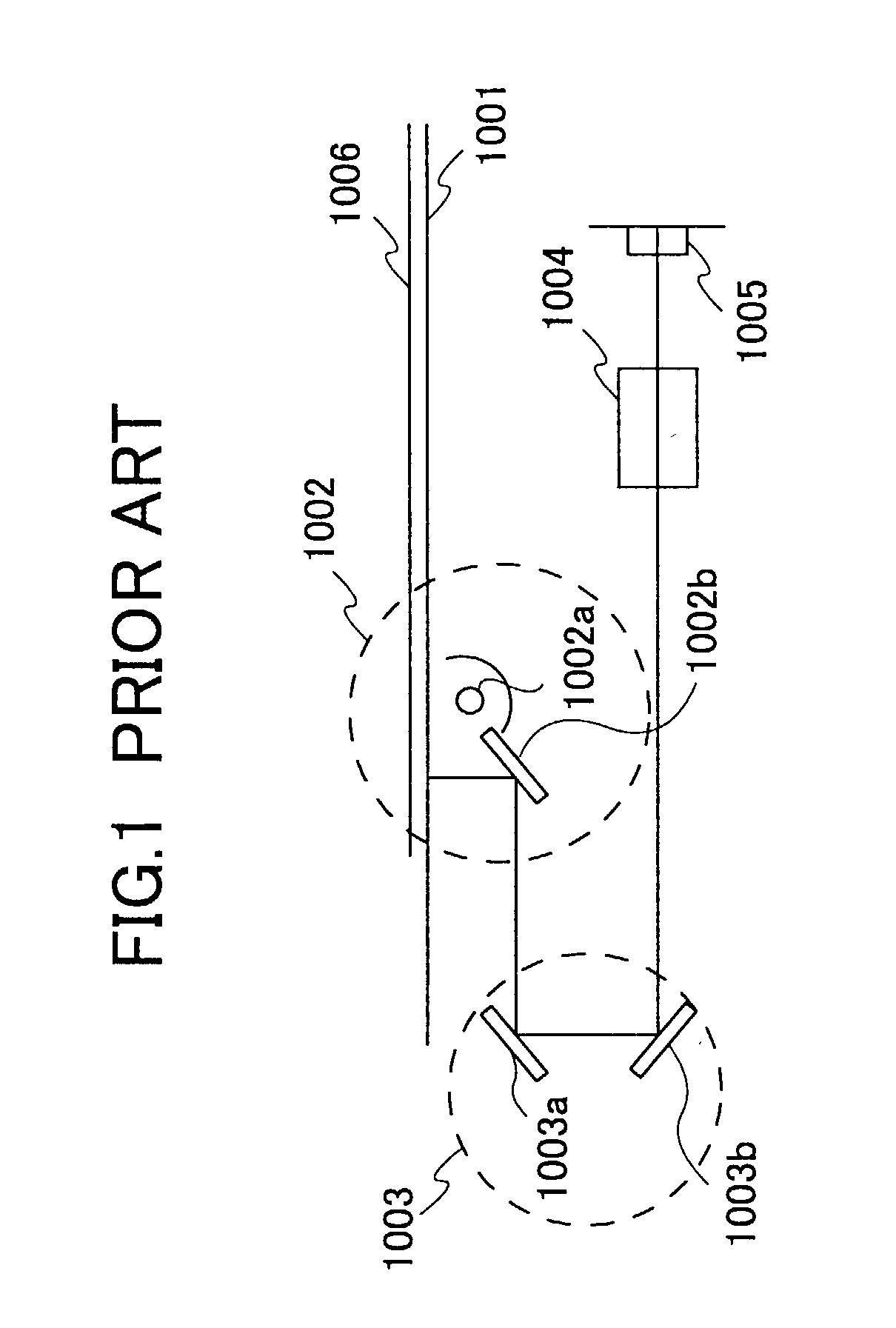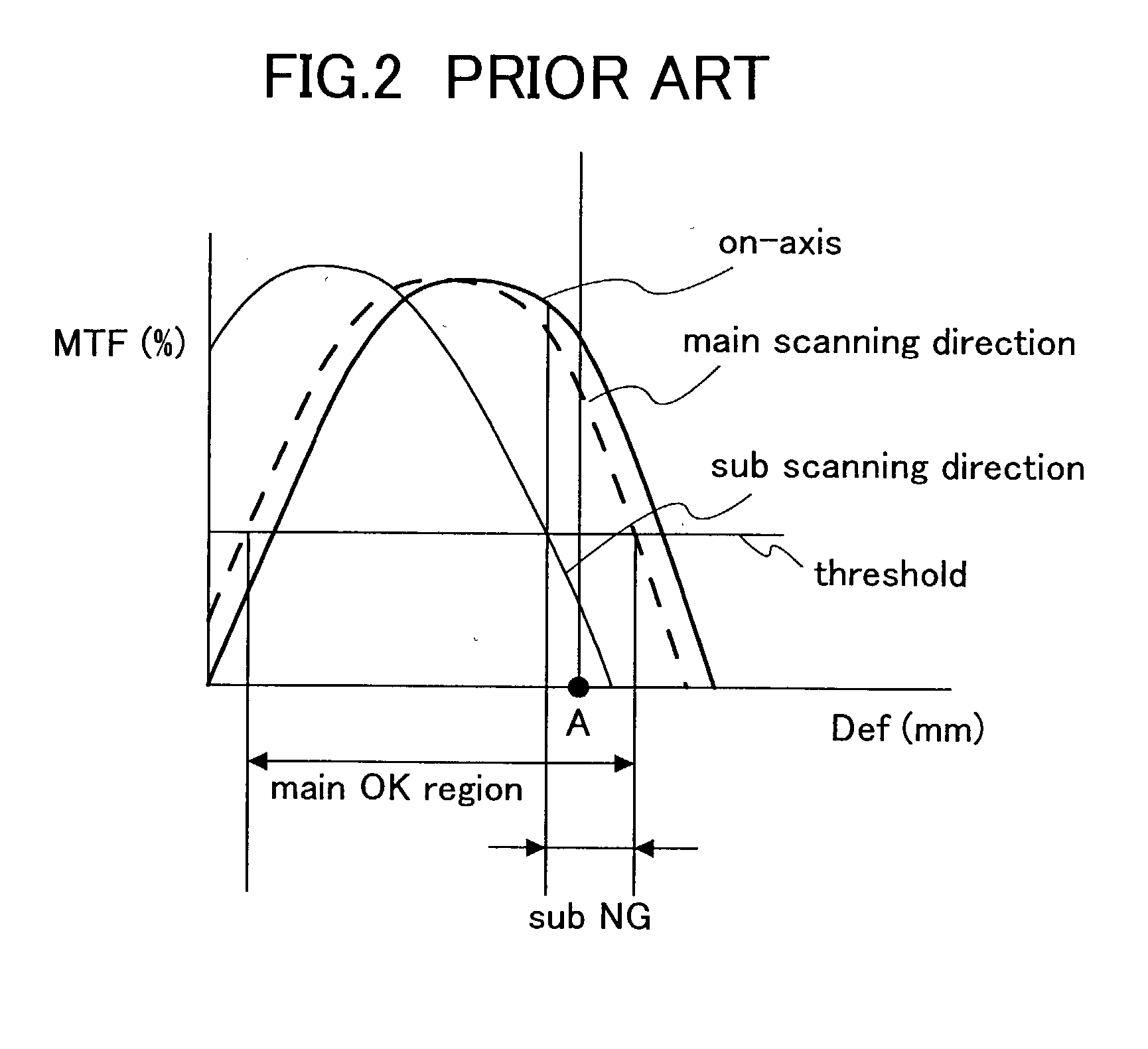Imaging lens, image reader using the lens, and imaging apparatus using the image reader
- Summary
- Abstract
- Description
- Claims
- Application Information
AI Technical Summary
Benefits of technology
Problems solved by technology
Method used
Image
Examples
first embodiment
[0066] FIG. 5 illustrates the structure of an imaging lens 10 according to the The imaging lens 10 comprises the first through forth (1-4) lens groups from the object, and a stop (diaphragm) 5 placed between the second and the third lens groups.
[0067] The first lens group 1 includes a first lens 11, which is a meniscus lens having a convex surface on the object side. The second lens group 2 includes a second lens 12 with a positive index of refraction, and a third lens 13 bonded to the second lens 12. The third lens group 3 includes a fourth lens 14 with a negative index of refraction, and a fifth lens 15 bonded to the fourth lens 14 and having a positive index of refraction. The fourth lens group 4 includes a sixth lens 16 with a positive index of refraction. This imaging lens has a 4-group 6-lens structure.
[0068] The characteristics and the parameters of the lenses 11-16 are listed in Table 1.
1TABLE 1 f = 50 F / No. = 4.0 .omega. = 16.9 Y = 152.4 r1 22.161 d1 4.86 n1 1.79152 .nu.1 ...
second embodiment
[0087] FIG. 11 illustrates an image reader 70 according to the The image reader 70 comprises a light source (not shown) for illuminating an image formed on an original (not shown), a CCD 76, first through third mirrors 71-73 for guiding a light image reflected from the original to the CCD 76, an imaging lens 74 for converging the light image guided by the mirrors 71-73 onto the CCD 76, and a member 75 having an anamorphic surface inserted in the light path from the-original to the CCD 76. In the example shown in FIG. 11, the member 75 having at least one anamorphic surface is inserted between the imaging lens 74 and the CCD 76.
[0088] The original is placed on a stage (not shown, see FIG. 1), and the image information on the original is scanned, while the image is illuminated by the light source (not shown). The light beam reflected from the original is reflected by the first through third mirrors 71-73, as illustrated in FIG. 11. The first mirror 71 and the light source (not shown)...
third embodiment
[0116] In the third embodiment, the image reader 90 not only achieves the consistent imaging positions in the main and sub scanning direction at each image height, but also brings the imaging positions of R, G and B into consistency with the target plane. To achieve this, the first through third mirrors 94-96 are furnished with anamorphic surfaces 94b-96b, respectively, so that the R, G, and B signals output from the CCD 98 become uniform at each image height.
[0117] In the example shown in FIG. 13, the first mirror 94 has a first surface 94a, which is the incident surface the light beam strikes, and a second surface 94b, which is opposite to the first surface and is the anamorphic surface. Similarly, the second mirror 95 has a first surface (i.e., the incident surface) 95a and a second surface (i.e, the anamorphic surface) 95b. The third mirror 96 has a first surface (i.e., the incident surface) 96a, and a second surface (i.e, the anamorphic surface) 96b.
[0118] The first surface 94a...
PUM
 Login to View More
Login to View More Abstract
Description
Claims
Application Information
 Login to View More
Login to View More - R&D
- Intellectual Property
- Life Sciences
- Materials
- Tech Scout
- Unparalleled Data Quality
- Higher Quality Content
- 60% Fewer Hallucinations
Browse by: Latest US Patents, China's latest patents, Technical Efficacy Thesaurus, Application Domain, Technology Topic, Popular Technical Reports.
© 2025 PatSnap. All rights reserved.Legal|Privacy policy|Modern Slavery Act Transparency Statement|Sitemap|About US| Contact US: help@patsnap.com



